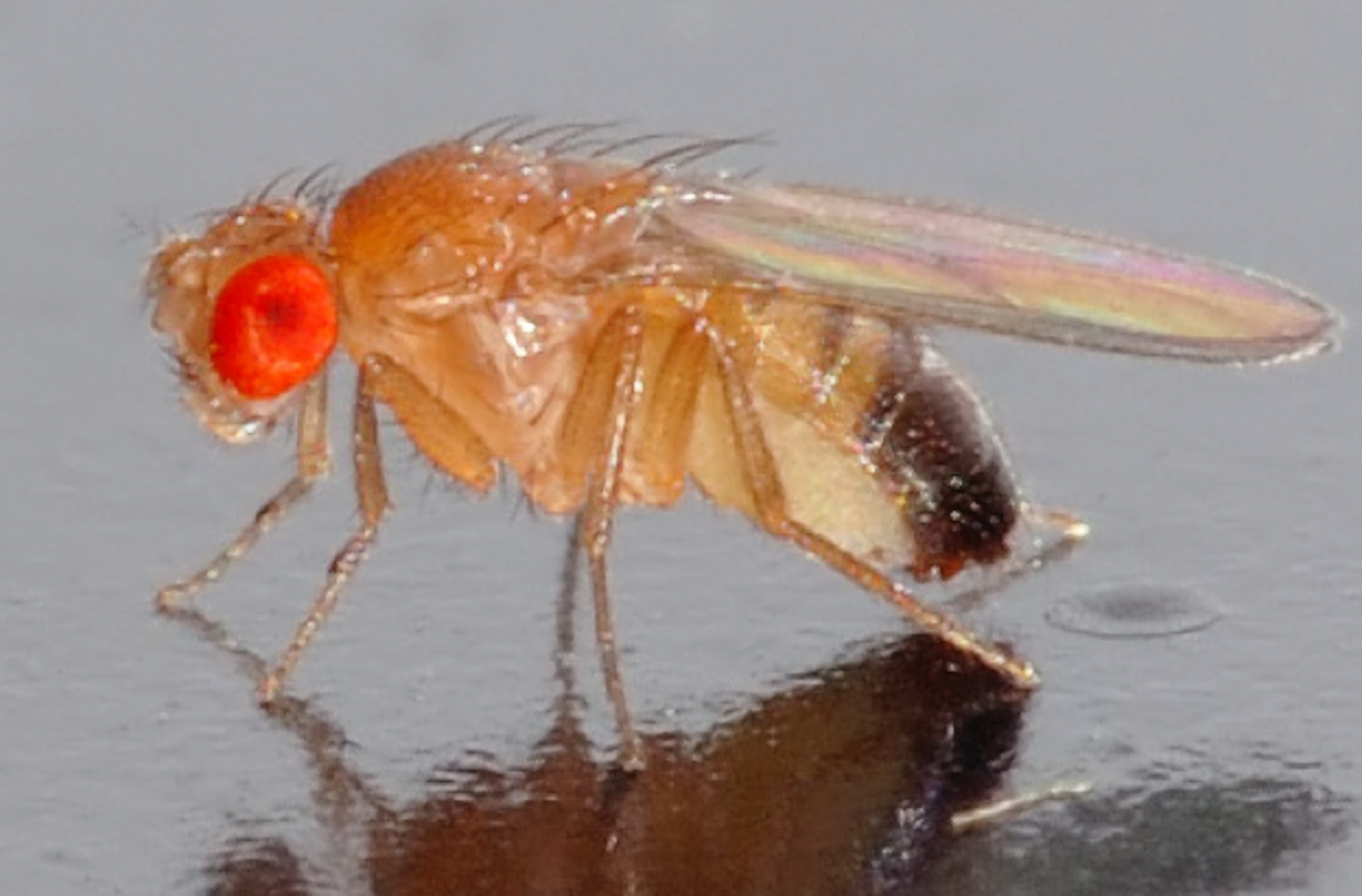©Copyright 2018 GEOSCIENCE RESEARCH INSTITUTE
11060 Campus Street • Loma Linda, California 92350 • 909-558-4548

Rudman, SM, S Greenblum, RC Hughes, S Rajpurohit, O Kirati, DB Lowder, SG Lemmon, DA Petrov, JM Chaston, P Schmidt. 2019. Microbiome composition shapes rapid genomic adaptation of Drosophila melanogaster. Proceedings of the National Academy of Sciences 116(40):20025-20032. www.pnas.org/cgi/doi/10.1073/pnas.1907787116.

A fruit fly, Drosophila melanogaster. Image Credit: Andre Karwath, CC by SA2.5
Summary. Previous studies [1] have shown that fruit flies in northeastern United States (e.g., Maine) have different life histories and different gut bacteria than fruit flies from southeastern United States (e.g., Florida). Flies in the north have more Lactobacillus in their guts, and exhibit slower development and greater resistance to starvation. Southern flies have contrasting traits and have more Acetobacter in their guts.
In this study, fruit flies from Pennsylvania were introduced into fourteen outdoor cages and given one of three diets over a period of 45 days. Some were given a diet to which the bacterium Acetobacter tropicalis was added, some were given Lactobacillus brevis, and a control group was not given extra bacteria. Results were that flies given extra Acetobacter in their food displayed faster development times and shorter periods of starvation resistance compared with Lactobacillus-fed flies. This parallels the situation in nature, where southern populations have faster development and less resistance to starvation, and have higher numbers of Acetobacter in their digestive tracts. Experimental populations also showed genetic differences that paralleled those seen in natural populations with similar gut bacteria. These results indicate that the gut microbiota may have a significant effect on the genome and the life history of a species.
Comment. The relationship between diet, gut microbiota and genetic changes adds another mechanism by which species may rapidly adapt to local environments. These mechanisms help explain how species are able to change far more rapidly than can be accounted for through mutations, and are another example of a mechanism for changes that do not add cumulatively over time to produce macroevolutionary changes such as production of new types of organisms or body plans.
[1] Walters, AW, MK Matthews, R Hughes, J Malcolm, S Rudman, PD Newell, AE Douglas, PS Schmidt, SM Chaston. 2018. The microbiota influences the Drosophila melanogaster life history strategy. bioRxiv preprint; http://dx.doi.org/10.1101/471540.